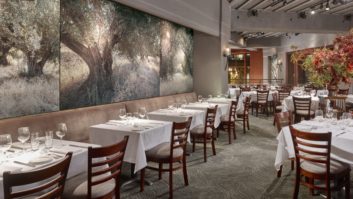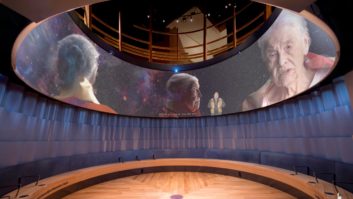 Glass all looks the same, doesn’t it? One piece is typically indistinguishable from the next.
Glass all looks the same, doesn’t it? One piece is typically indistinguishable from the next.
But what’s invisible are the hundreds, if not thousands, of enhancing features that give glass differing purposes and functionalities. And these attributes can hugely influence the resilience and performance of AV tech when used for casing for signage or advertising displays.
IMPACT PERFORMANCE
Durability and safety are top priorities when installing displays in public, high traffic areas. A comprehensive understanding of their placement, dimensions, wind loads, and potential impacts is essential when specifying the glazing to mitigate damage to the technology inside.
An airspace between the glass and the digital screen will typically provide a level of protection. But the glass must be fortified through lamination or tempering to ensure safety and provide added security. Specifiers should always use safety glass, which will be laminated glass, tempered glass or a combination of both. Laminated glass will hold its position if shattered thanks to an interlayer sandwiched between two glass layers. This means shards of glass are unlikely to fall and harm people or the display.
Chemically tempered glass, produced via an ion exchange process, is ideal for thinner glasses and applications requiring four times the strength. Heat treated glass can double the strength of the glass and add further security. It involves the supplier subjecting the glass to extreme temperatures and then rapidly cooling it. But it’s important to remember that this isn’t safety glass by itself.
The innate purpose of displays is to communicate, from advertising messages to menus or directions. But glare, particularly when screens are installed outside or in well-lit atriums, can prevent them from doing their job. The installation of colour-neutral, anti-reflective glazing can optimise image quality, reduce unwanted reflections, and enhance visibility for customers. Anti-Reflection (AR) coatings work to diminish reflections from the glass surface, ensuring the content remains easily viewable.
HEAT MANAGEMENT
In outdoor AV installations, an additional point of concern for installers revolves around exposure to sunlight, which can often lead to substantial heat ingress. While some installers resort to active cooling systems to tackle this issue, the choice of glazing plays a pivotal role in addressing solar heat gain, effectively transforming it into a cooling system.
Glass can absorb, or transmit the sun’s energy, which can cause tech to overheat and cease functioning. But specialist glazing can help prevent damage by reflecting the sun’s energy or UV light away, blocking over 99% of UV, which can be increased with the addition of applied film, an interlayer within the laminate, coating or tinting the glass.
The many iterations of glass provide a breadth of solutions for AV casing designers, enabling them to meet the needs of any display, anywhere. Specifying the right glass for the surroundings will maximise the user experience, minimise maintenance callouts, avoid costly replacements or even injury. And, it will help to display content to the fullest intention of its producer.





